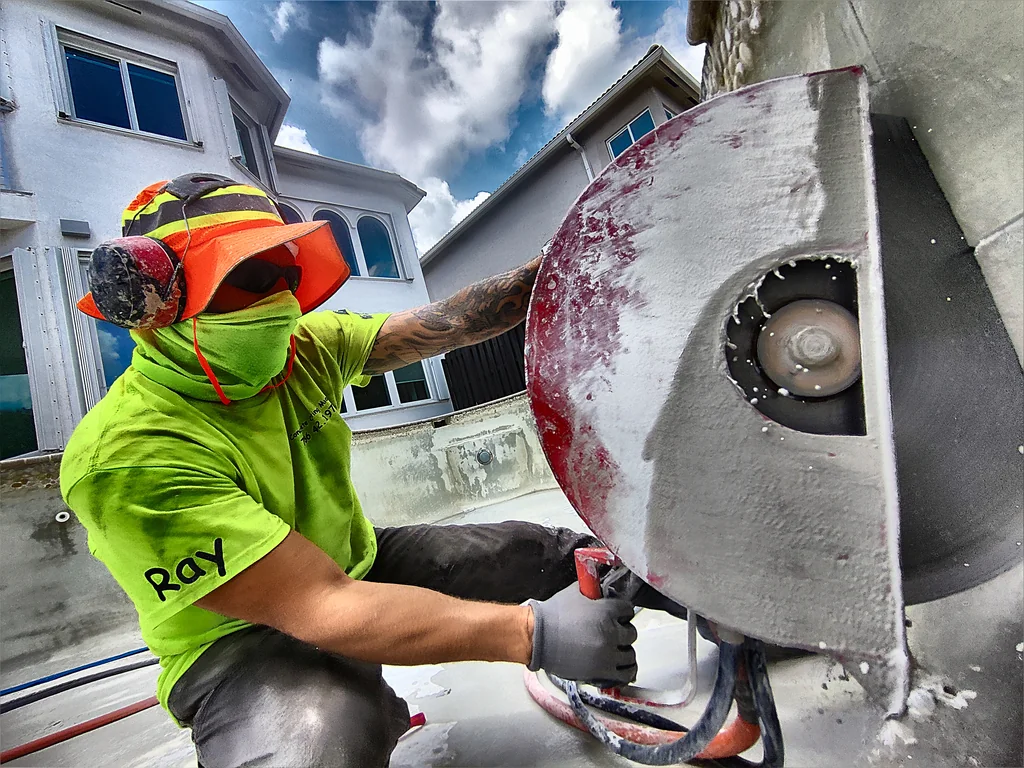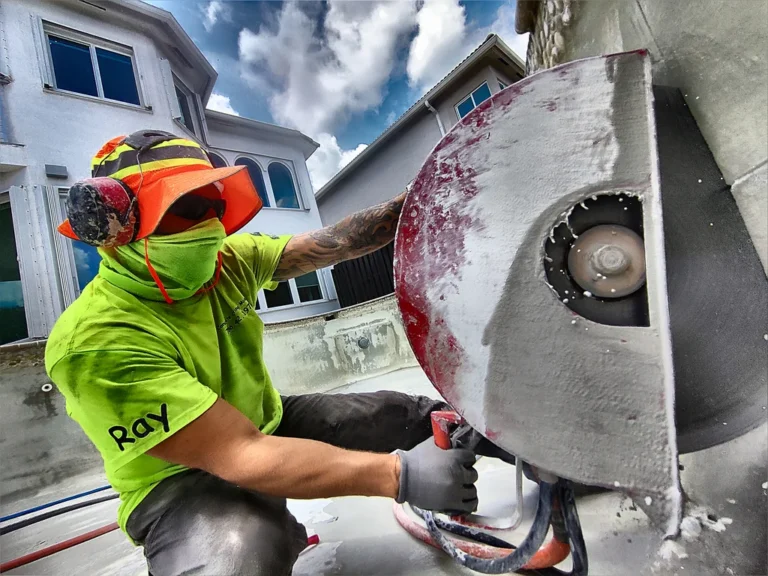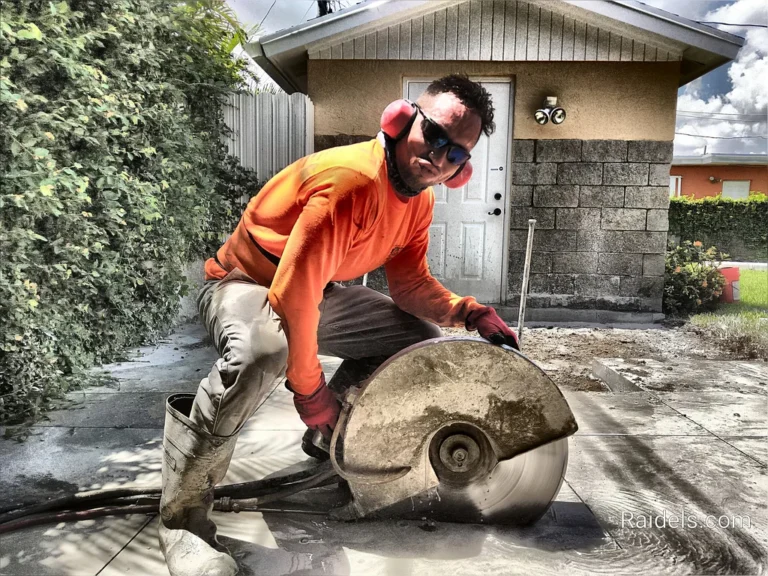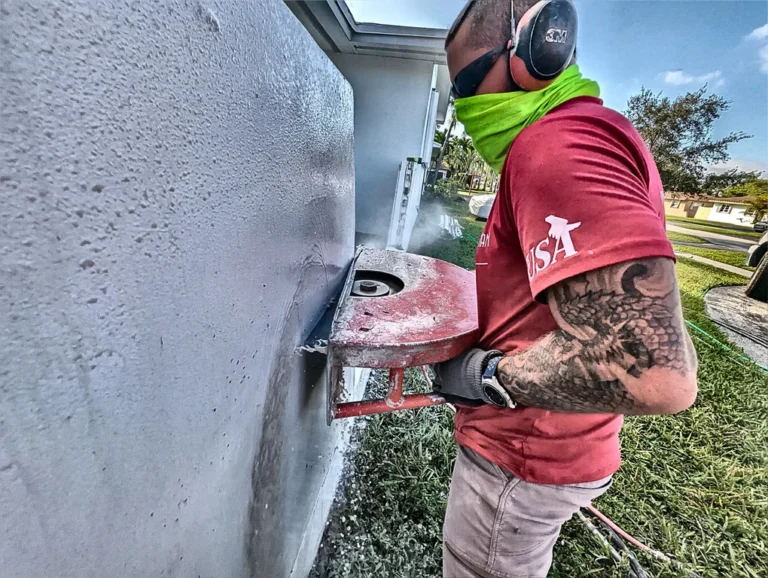In my two decades navigating the nuances of concrete work, particularly here in Miami, one fundamental question surfaces repeatedly: when is precision cutting the right call, and when does controlled breaking or demolition make more sense? It’s not always an obvious choice, and understanding the distinction between concrete cutting vs breaking is crucial for project success, safety, and cost-effectiveness. Both methods remove concrete, but they operate on vastly different principles and yield distinct results. Making the wrong choice can lead to structural damage, excessive mess, project delays, and blown budgets. Let’s dissect these techniques to help you determine whether your project needs the surgical precision of a cut or the controlled force of a crack-up.
Defining the Methods: Precision vs. Impact
At their core, the difference lies in how force is applied:
Concrete Cutting: The Art of Precision Removal
This involves using specialized saws equipped with diamond-impregnated blades or wires to slice through concrete with remarkable accuracy. The goal is controlled separation and creating clean, defined edges. Key methods include:
- Slab Sawing: Using walk-behind saws for precise cuts in horizontal surfaces like floors, driveways, and patios. Essential for trenching or removing specific sections. See our guide on concrete slab sawing in Miami.
- Wall Sawing: Employing track-mounted saws for accurate vertical or angled cuts in walls, vital for creating openings for doors and windows.
- Core Drilling: Utilizing cylindrical diamond bits to create perfectly round holes for utilities, anchors, or testing.
- Hand Sawing/Chain Sawing: Using portable saws (including powerful hydraulic chain saws ) for smaller jobs, confined spaces, or intricate cuts.
- Wire Sawing: Employing diamond-impregnated wires for cutting massive structures or irregular shapes where blades can’t reach.
The common thread? Concrete cutting is about controlled separation using abrasion.
Concrete Breaking & Demolition: The Science of Impact
This approach uses impact force to fracture and break concrete apart for removal. It’s generally less precise but can be faster for bulk removal. Common tools and methods include:
- Jackhammers/Pavement Breakers: Pneumatic or electric hammers delivering repetitive high-impact blows.
- Hydraulic Breakers: Powerful attachments often mounted on excavators or skid steers for large-scale demolition.
- Chipping Hammers: Smaller, handheld tools for more detailed removal or surface preparation. Find out who is more likely to use a chipping hammer.
- Hand Tools: Sledgehammers and pry bars, suitable only for very small or already weakened concrete. Learn more about breaking concrete with hand tools.
The focus here is on fracturing the material through impact. This falls under the umbrella of concrete demolition.
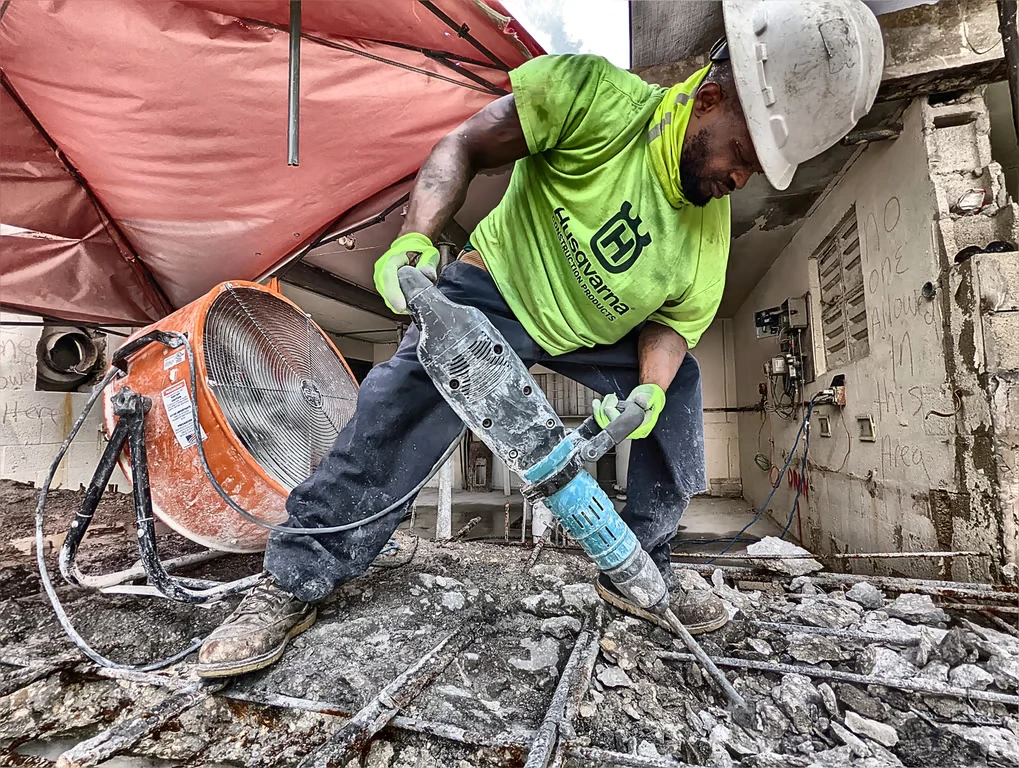
Head-to-Head Comparison: Key Differences
Let’s compare these approaches across critical project factors:
Precision and Control
- Cutting: Offers high precision. Creates clean, straight edges exactly where needed. Ideal for creating openings, isolating sections, or achieving specific dimensions. Minimizes damage to surrounding concrete that needs to remain.
- Breaking: Inherently less precise. Impact forces can cause unintended cracking (spalling) or damage beyond the target removal area. Difficult to achieve clean, straight lines.
Winner: Concrete Cutting
Speed and Efficiency
- Cutting: Can be very fast for linear cuts (like slab sawing trenches). However, cutting large volumes or heavily reinforced concrete can be slower than breaking. Setup time for methods like wall sawing also factors in. Explore what’s the fastest way to cut concrete.
- Breaking: Often faster for removing large volumes of concrete where precision isn’t paramount (e.g., demolishing an entire slab or foundation). Less setup time for handheld breakers compared to track-mounted saws.
Winner: Context-Dependent (Breaking for bulk, Cutting for linear/precise)
Dust, Noise, and Vibration
- Cutting: Primarily uses wet methods, significantly reducing airborne dust. Noise levels are high but generally consistent. Vibration is present but typically lower and more localized than with impact methods.
- Breaking: Generates substantial airborne dust (requiring suppression methods but often less effective than wet cutting). Creates high levels of impact noise and significant vibration that can travel through the structure and ground, potentially affecting adjacent areas or sensitive equipment. See tips on how to minimize dust and debris during a residential concrete demolition.
Winner: Concrete Cutting (Generally lower dust, noise, and vibration)
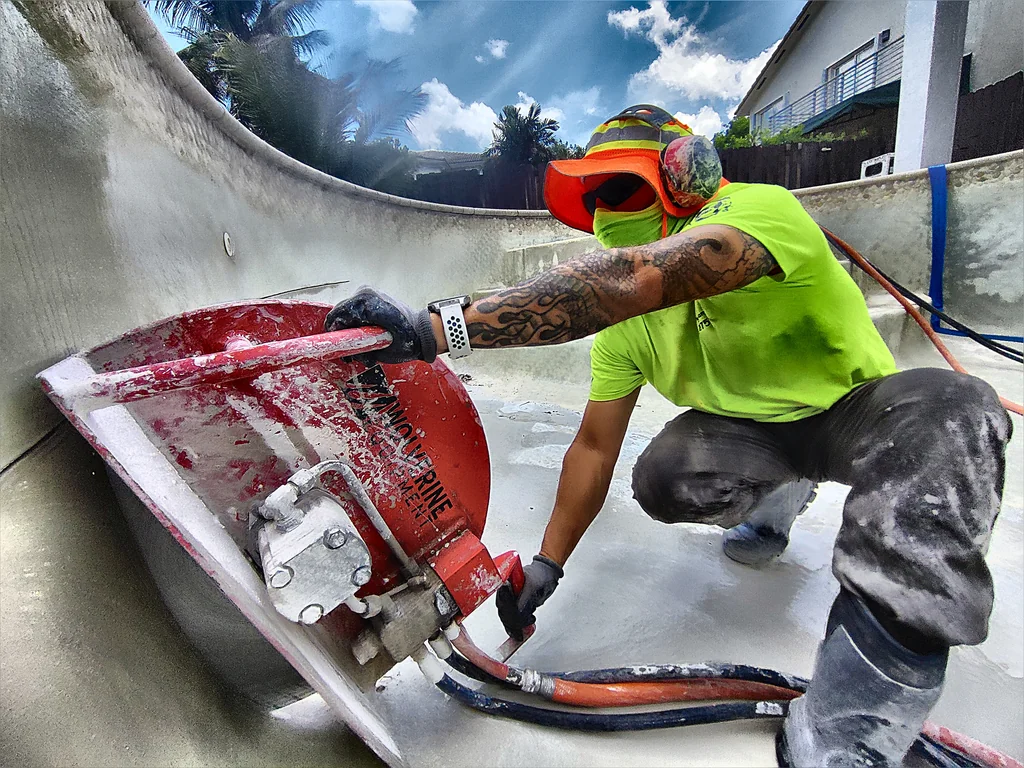
Impact on Structural Integrity
- Cutting: Minimal impact on surrounding structure when done correctly. Ideal for working near or within load-bearing elements if engineered properly. Allows selective removal without compromising adjacent areas.
- Breaking: High impact forces can send vibrations through the structure, potentially causing micro-cracking or weakening nearby concrete or masonry. Risky to use directly on or very near critical structural elements without careful assessment.
Winner: Concrete Cutting
Cost Factors
- Cutting: Costs often depend on linear footage or number/size of cores, depth, presence of rebar, and equipment needed. Specialized blades and equipment can be expensive. See our guide on concrete cutting costs.
- Breaking: Costs often relate to volume removed, equipment rental/operation time (jackhammers, excavators), labor intensity, and debris disposal. Can be cheaper for bulk removal if precision and collateral impact aren’t major concerns.
Winner: Context-Dependent (Often breaking is cheaper for non-precise bulk removal, cutting may be more cost-effective for specific, clean tasks). Compare concrete chipping vs demolition costs/pros/cons.
Typical Applications: Matching Method to Mission
Understanding the strengths of each informs their typical uses:
Choose Concrete Cutting When:
- Creating precise openings (doors, windows, utility penetrations).
- Cutting trenches for plumbing or electrical lines.
- Removing specific, damaged sections of slabs or walls while preserving the rest.
- Creating control joints.
- Working near sensitive areas or equipment where vibration must be minimized.
- Clean, aesthetic edges are required.
- Cutting heavily reinforced concrete where breaking might be inefficient or damaging.
Choose Concrete Breaking/Demolition When:
- Complete removal of large structures (foundations, slabs, walls) where preservation isn’t needed.
- Bulk excavation or site clearing involving concrete removal.
- Speed is paramount for large volume removal, and precision/vibration are lesser concerns.
- Cost is the primary driver, and some collateral impact is acceptable.
The Hybrid Approach: Best of Both Worlds
Often, the most effective strategy involves combining both techniques. For instance:
- Isolate: Use concrete cutting (slab or wall sawing) to create clean boundary lines around the section designated for removal.
- Break: Use breaking methods (jackhammers, hydraulic breakers) to demolish the concrete within the cut lines.
This approach contains the impact and vibration of breaking to the specified area, protects the surrounding structure, and makes bulk removal faster than cutting the entire volume into small pieces. This is common in projects like partial slab removal or creating large openings.

Making the Right Choice for Your Miami Project
Selecting between concrete cutting and breaking in Miami requires careful consideration of:
- Project Goals: What is the ultimate objective? A clean opening or bulk removal?
- Structural Considerations: Is the concrete structural? Is preservation of adjacent areas critical?
- Site Constraints: Are there noise restrictions? Vibration concerns? Accessibility issues? Dust control requirements?
- Budget: What are the financial parameters?
- Timeline: How quickly does the work need to be completed?
As a 20-year veteran, my advice is this: don’t default to the perceived “cheaper” or “faster” option without a thorough assessment. The potential costs of repairing unintended damage from breaking often outweigh the initial savings. Conversely, using precision cutting for massive bulk removal might be unnecessarily slow and expensive. Consulting with experienced concrete cutting miami professionals is invaluable. They can assess your specific project, discuss the pros and cons of each method in your context, and recommend the safest, most efficient, and cost-effective approach.
